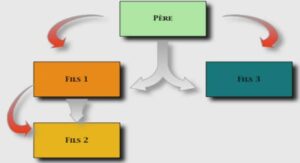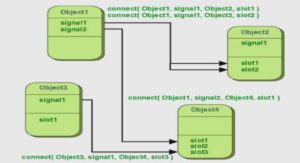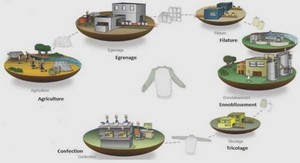Étude de la dissociation des hydrocarbures aromatiques polycycliques dans un contexte astrophysique
Generalization to medium-sized PAHs, astrophysical implications
In this manuscript, we have presented a detailed view on the interaction with VUV photons and energetics of two isomers of the dibenzopyrene cation. This work combines experimental data obtained at synchrotron facilities (SOLEIL and SLS) with computational work using DFT calculations, RRKM modelling and MD simulations. This study gives us some insight into the impact of the PAH structure on stability and dissociation pathways. Additionally, information about the effect of PAH size can also be retrieved from our experimental campaigns, in which a set of smaller PAHs were studied, which samples a range of sizes from 10 to 24 carbon atoms. All these results are summarized in this chapter. The yields of ionization and dissociation are first discussed, including our work published in Zhen et al. (2016). They are relevant to the stability of PAHs in astrophysical environments. In particular the ionization yield is related to the contribution of these species to the heating of the gas by photoelectric effect. We next move to the energetics approach of fragmentation pathways as a function of PAH size, based on the iPEPICO data as given in our article (West et al. 2018), in which the importance of both types of carbon (sp2 versus sp3) in the dissociation energies is highlighted. Finally, we detail the ion trap results we obtained for coronene in order to support our theory of a possible new H2 formation mechanism.
Ionization versus fragmentation of medium-sized PAHs
The results presented in this section correspond to a campaign at SOLEIL, and have been reported in Zhen et al. (2016b). The molecular ions under study span over a range of sizes and structures (see Figure 7-1), being: anthracene (C14H10+), pyrene (C16H10+), tetracene (C18H12 +), perylene (C20H12 +), benzo[g,h,i]perylene (C22H12+), coronene (C24H12+), and the already introduced dibenzo[a,l]pyrene and dibenzo [a,e]pyrene (C24H14 +). Chapter 7: Generalization to medium-sized PAHs, astrophysical implications 113 Figure 7-1 Schematic drawings of the eight molecules of the ion trap campaign. From left to right and top to bottom: anthracene (C14H10), pyrene (C16H10), tetracene (C18H12), perylene (C20H12), benzoperylene (C22H12), coronene (C24H12), dibenzo(a,e)pyrene (C24H14), dibenzo(a,l)pyrene (C24H14). The aim of this study was to quantify the yields of fragmentation and ionization of PAH cations of different sizes in order to provide data to model accurately the abundance of PAHs in different ionization states. As we saw in Chapter 1, PAHs are expected to be found in different charge states in the ISM but so far the ionization yield used in astronomical models relies on the works of Verstraete et al. (1990) and Jochims et al. (1996) for neutral PAHs. Moreover, charge also has a profound effect on the IR spectral characteristics of PAHs (Bakes et al. 2001b; Malloci et al. 2007b) as well as on its electronic absorption spectrum (see e.g., Cecchi-Pestellini et al. 2008). Therefore, it is of interest to consider all possible charge states that PAHs can experience in astrophysical environments. The ionization yield of these PAH cations was obtained under a similar assumption as in Chapter 4. Briefly, we rely on the close similarity between the photo-absorption cross sections obtained theoretically by Malloci et al. (2004), (2007a), and the sum of all the photo-events in our experimental setup (fragments + doubly ionized) as reported in Zhen et al. (2016b) and illustrated in Figure 7-2 for pyrene, tetracene, perylene and benzoperylene as an example. Chapter 7: Generalization to medium-sized PAHs, astrophysical implications 114 Figure 7-2 Values of the relative intensity of the photo-products of different PAHs (full black lines) submitted to VUV photons as a function of photon energy. Theoretical cross sections calculated by Malloci et al. (2004), (2007a) are shown in grey dotted lines. We can derive two trends from these yields, shown in Figure 7-3. First, for a given photon energy the ionization yield increases with increasing PAH size, especially in the range from the second ionization potential (IP2) to ∼13.6 eV. This yield increases more smoothly for the smaller molecules, while in the bigger ones we see a steep jump between IP2 and 12 eV. This can be accounted for by their photo-fragmentation dynamics (Jochims et al. (1994)). A larger species (with higher number of vibrational modes) will need a higher internal energy to reach the same level of excitation in a given bond if this internal energy is distributed statistically. In addition the value of IP2 decreases with PAH size (Malloci et al. (2007b)). A point must be made for the ionization yields of the two dibenzopyrene isomers, clearly different at low photon energies. Even though the ionization cross sections of both molecules are similar, the photofragmentation cross sections are not, as we have seen throughout this work (in Chapter 7: Generalization to medium-sized PAHs, astrophysical implications 115 Chapter 4). This translates in the importance of the specific structure of the PAH on the ionization yield at low energies. Second, the ionization yield is relatively independent of the size and structure of the PAH cations in the high energy range (≥ 15 eV); for all the molecules this yield shows a gradually increasing behavior up to around 0.9 at ∼18 eV, consistent with the values previously reported by Zhen et al. (2015) on the larger PAH cations ovalene (C32 H14+) and ‘HBC’ (C42H18+).
Activation energies of small and medium-sized PAHs
In addition to the results reported in Chapter 6 on activation energies of the dehydrogenation of the dibenzopyrene isomers, we also studied the unimolecular dissociation of eight more PAH molecules in iPEPICO experiments with the aim of establishing clear, experimentally-derived trends in the reaction energies over a wide range of sizes. These molecules were: acenaphthylene (C12H8), fluorene (C13H10), cyclopenta[d,e,f]phenanthrene (C15H10), fluoranthene (C16H10), pyrene (C16H10), corannulene (C20H10), perylene (C20H12) and coronene (C24H12). The ion structures of pyrene, perylene, coronene and the dibenzopyrene isomers were shown previously in Figure 7-1. Figure 7-5 shows the 2D representations of the five molecules that have not been previously presented, all of which present a 5-member ring in their structures. Chapter 7: Generalization to medium-sized PAHs, astrophysical implications 117 Figure 7-5 Schematic figures of five of the molecules studied on the iPEPICO test campaign. The remaining five are shown in Figure 7-1. In total, 25 different fragmentation reactions were observed and fit using RRKM modelling (see West et al. (2018) for the detailed results and breakdown curves) for these ten molecules. Fluorene and cyclopentaphenanthrene present a sp3-carbon center, similarly to other two PAHs studied previously by the group of Prof. P. Mayer: dihydronaphthalene (C10H10) and dyhydrophenanthrene (C14H12) (West et al. (2014a)). The results on the activation energies of the dehydrogenation reactions of the latter two molecules are combined with the ones obtained in West et al. (2012) for naphthalene and those from this campaign. They are presented in Figure 7-6 as a function of PAH size (from 10 – dihydronaphthalene and naphthalene – to 24 carbon atoms – coronene and the dibenzopyrene isomers).
Description |




